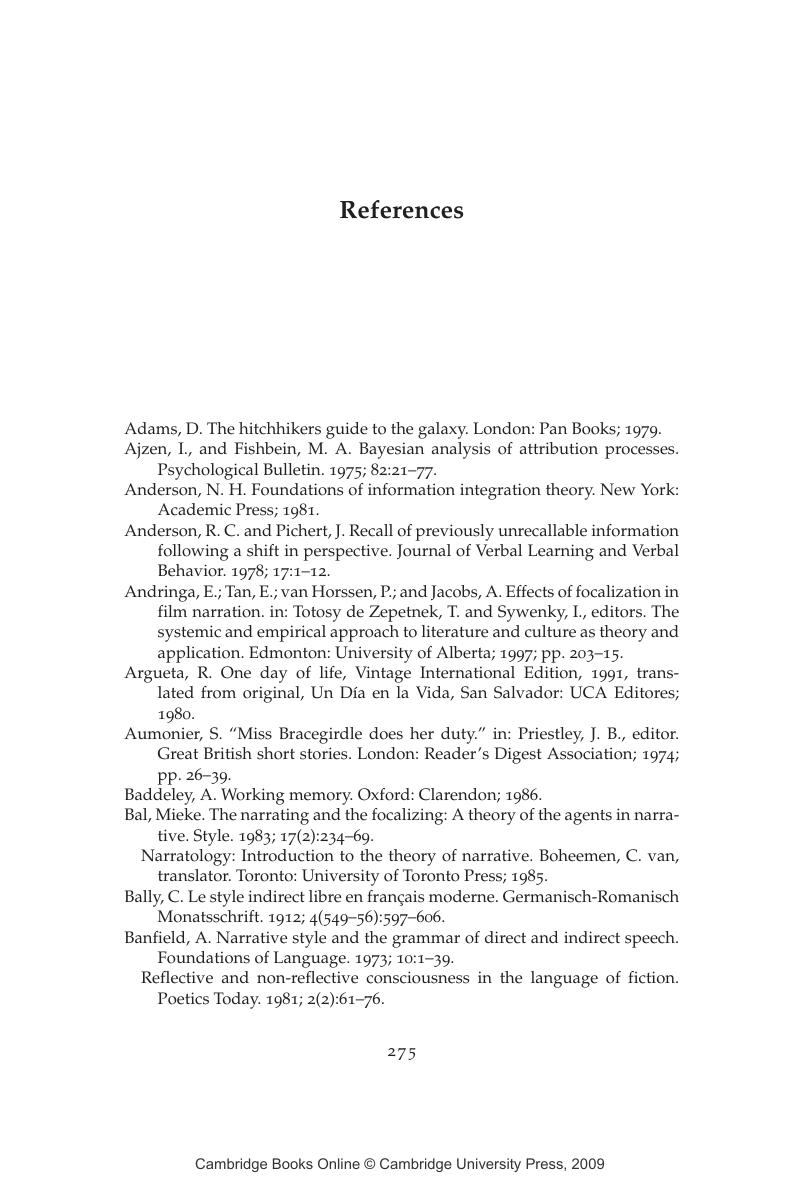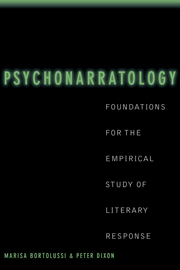Book contents
- Frontmatter
- Contents
- List of Figures and Tables
- Acknowledgments
- 1 Introduction
- 2 Preliminaries
- 3 The Narrator
- 4 Events and Plot
- 5 Characters and Characterization
- 6 Perception and Focalization
- 7 Represented Speech and Thought
- 8 Directions and Unsolved Problems
- Appendix: Evaluating Evidence
- References
- Index
- References
References
Published online by Cambridge University Press: 28 July 2009
- Frontmatter
- Contents
- List of Figures and Tables
- Acknowledgments
- 1 Introduction
- 2 Preliminaries
- 3 The Narrator
- 4 Events and Plot
- 5 Characters and Characterization
- 6 Perception and Focalization
- 7 Represented Speech and Thought
- 8 Directions and Unsolved Problems
- Appendix: Evaluating Evidence
- References
- Index
- References
Summary

- Type
- Chapter
- Information
- PsychonarratologyFoundations for the Empirical Study of Literary Response, pp. 275 - 294Publisher: Cambridge University PressPrint publication year: 2002



